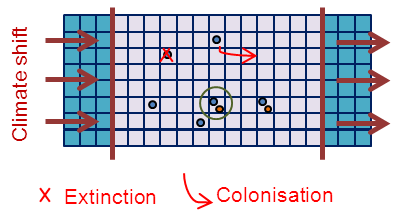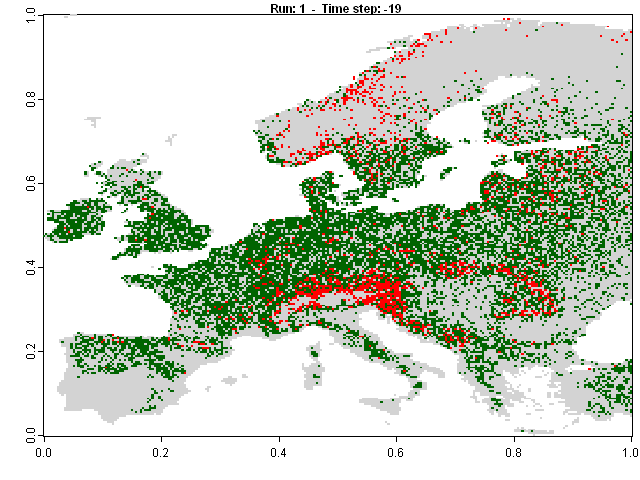Community Ecology
Depending on species interaction types (e.g. mutualism or host parasite interactions) communities react differently to global change. I am interested in the persistence and spatio-temporal dynamics of communities as a response to changes in their environment. Topics include dispersal, invasion, spatial heterogeneity and temporal variability.Current and previous projects:
Climate induced habitat shifts impact interacting species

Collaborators: Justin Travis, Karin Johst
Dynamic species distribution model

The image displays projections of a butterfly (red) and its host plant (green), assuming a severe climatic change during 100 years. Here both, dispersal abilities and interaction between the butterfly and the host plant species affect range shifts and as a consequence local community assemblage. Thus currently stable communities might have to reassemble in other regions, in the future.
Collaborators: Oliver Schweiger, Ingolf Kühn Karin Johst
Programm Terrestrische Umwelt
Impacts of spatial heterogeneity in a multi-trophic system
Caterpillars of Maculinea butterflies are parasites of specific Myrmica ants. Parasitism of ant nests is spatially structured by the distribution of larval host plants. Our modelling study assessed the importance of spatial host plant distribution for the persistence of local Maculinea populations.MacMan - project
